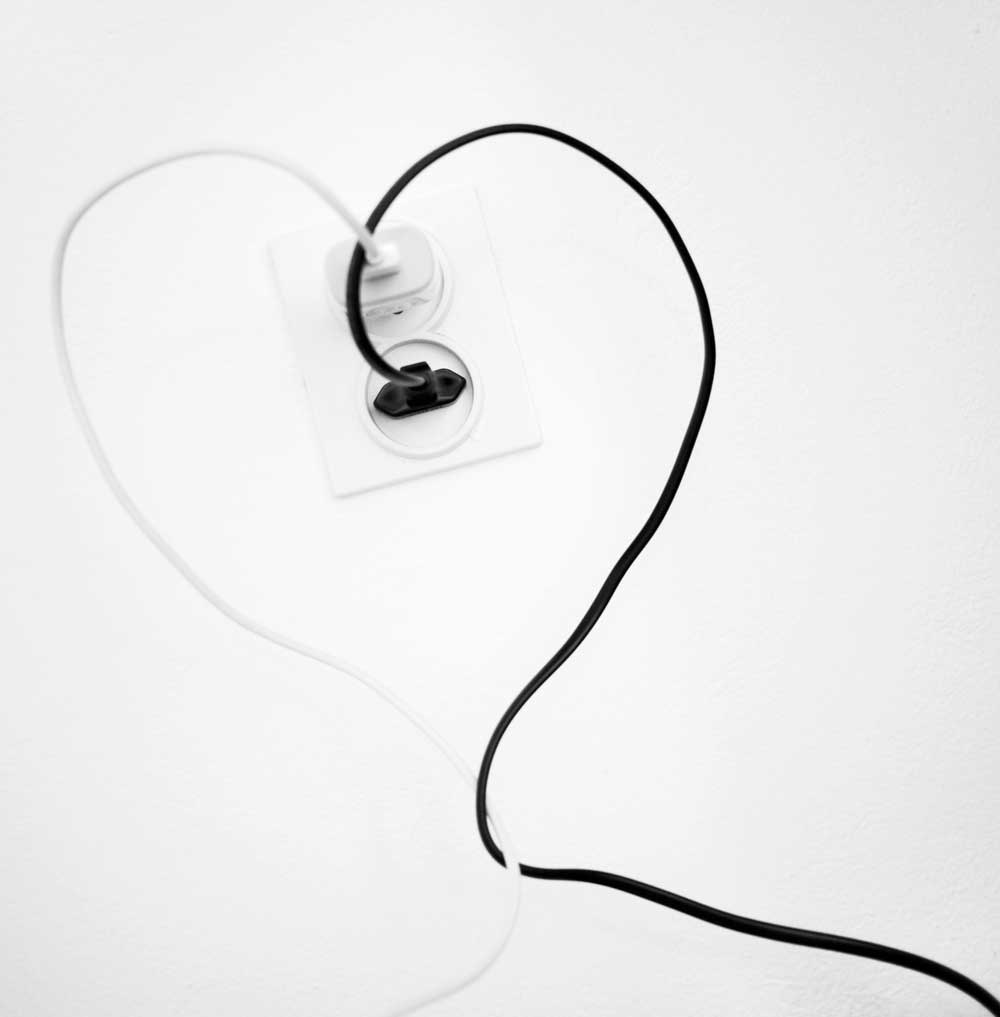Task 9 – Good enough is best
Task 9
Good enough is best

May was so concerned with her pictures turning out perfect that her progress came to a halt in the workshop. My advice was to take bad pictures. If you accept that you will take bad pictures, it becomes easier to find the good ones. May found out that being more playful could be liberating. She composed a fine series of something as trivial as wires – black and white, yin and yang, resembling a heart. Being able to create something alive and vibrant depicting wires impressed me. Original, as in originating from her heart.
Croatia, Hvar, 2016. Photo: May Haukås
Problem
Perfectionism
The Camera Cure® may turn out to be the only book I will get to write and publish. It is an ambitious project. I want to bring together everything I have learned and also make sure that as many people as possible benefit from it. Because of that it is easy to get hung up on the idea that both my language usage and the contents of the book have to be perfect. This level of ambition makes it so that it is difficult to get started. My solution to this was to begin writing before I was ready to do it and let my fingers wander across the keyboard and then count on my thoughts following right behind. I told myself
that it is ok to write badly and then allow perfectionism to play its part when it is time to fine tune the written material. Maybe the sentence that I am writing now will be superfluous? In that case, I can get rid of it later on. Clint Eastwood has a very laidback attitude to filming takes. If an actor says, “I can do this better,” Clint answers back, “No, don’t ruin it with perfection.” Clint Eastwood knows that real life is imperfect. Only a false façade can seem perfect. There is little that has hindered so many people from achieving something as much as perfectionism has.
If we have too much focus on the end result, it is difficult to get started. We should value process over product Therefore, it is very important to enjoy and appreciate the action of taking photographs more than the result itself. Paradoxically enough, often the photos end up being better this way.
The most serious consequence of perfectionism is procrastination or hesitation. Since we are so focused on the result being perfect, we put off getting started for as long as we can – maybe forever.
If we think; I have to take better pictures, the intellectual, serious and less creative part of the brain will take control over what we are doing.
Let us rather think; Just take some photos! Consequently, the intuitive, playful and more creative part of the brain will be steer the process. Then, doing it seems effortless.
How relevant is this issue for you on a scale of 1 to 6?
Solution
Accept taking bad pictures
It is built into us that we want to do our best. This legacy, coming from our ancestors, is positive. They were the best at what they did. The performance gene has been handed down to us. At a photography workshop we never have to press people into action because the pressure that they put on themselves is sufficient. The desire to perform is reinforced by the fact that there are also other participants attending the workshop.
I compare a group of participants who are going out to take photos with a group of hunters departing on hunting trip. Everyone contributes even though there are only one or two people who capture their prey. The knowledge that the others are also out there photographing increases everyone’s efforts. Maybe only one or two of them actually come back with a great picture, but as we look through the pictures in the evening, we all learn something from those who succeeded.
In order to go out and perform our best, we should allow ourselves to try and miss. Therefore, at a workshop we tell the participants to relax and accept the rather ordinary pictures that they take. They are necessary steppingstones in order to get extraordinary ones. The strikers in soccer that scores the most also misses the most. Just enjoy the fact that you even have the opportunity to go out and explore the world. Tell yourself that you will be responsible for producing a certain number of photos, and then the quality will take care of itself. When we are out taking photographs, our tasks are to press the shutter button, keep moving, be focused and be patient. The pictures follow as a consequence of this. The best way to double the amount of good pictures is to double the amount of mediocre ones.
Photo assignment:
Today, take 20 photos. Don’t think about them having to be good.
Rather, think that they can just as well be bad.
How useful was this task for you on a scale of 1 to 6?
BOOK SUGGESTION: Imperfect by Brené Brown
❞ OK is fantastic. By thinking OK is fantastic, you avoid a common mistake: Waiting for the perfect. You need to get going, you need to act.
Petter Stordalen
❞ his can be a really good picture in time. It lacks only a few small mistakes to become really great.
❞When I start a new book, I say to myself: Sit down and write something stupid.
[note_editor]

